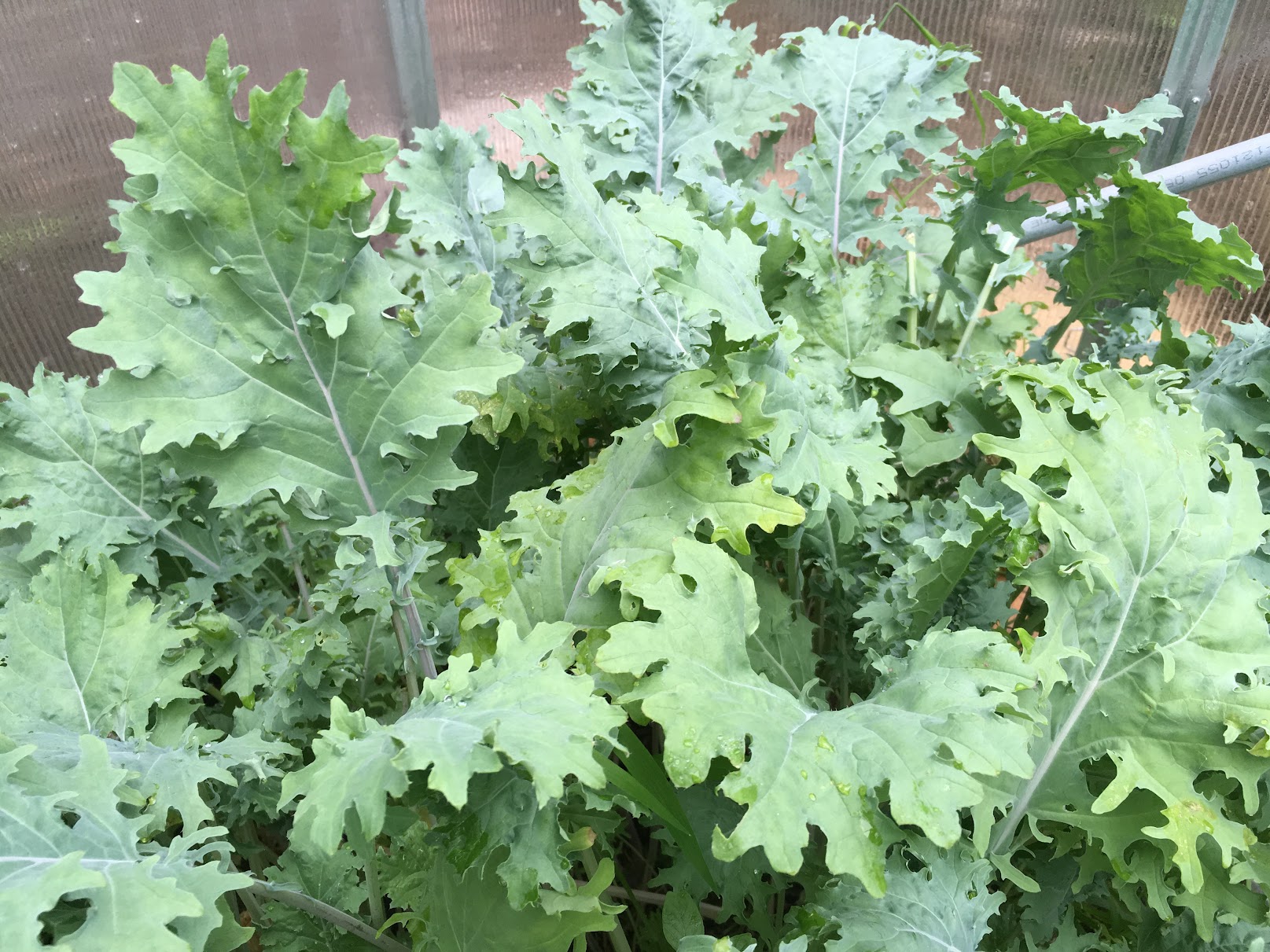Jordan Estrada 08.26.21
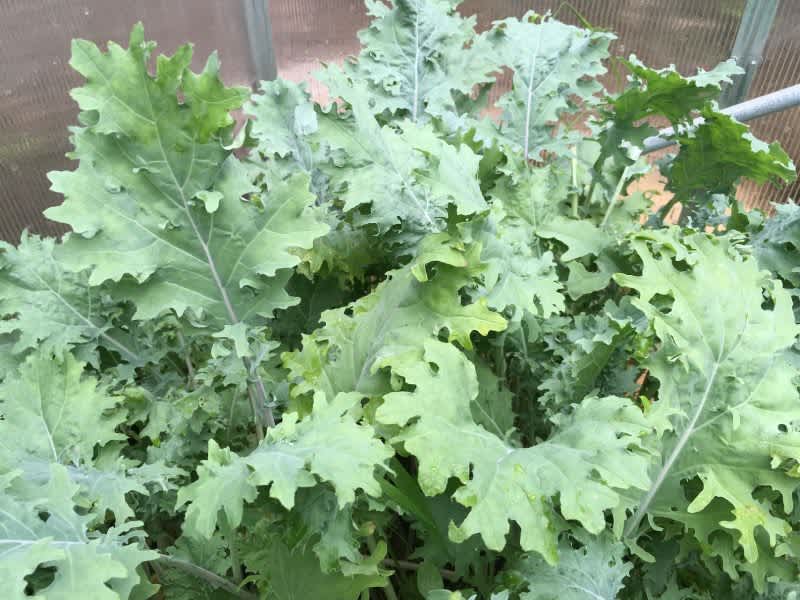
During the pandemic last year, we got a taste of what it looks like when the food supply chain is disrupted. The combined impacts of interrupted supermarket delivery and the reactive wave of panic buying and hoarding left many wondering how they would feed themselves and their family if this problem continued long-term.
Gardening is a go-to solution for sustainability and survival, but not all garden plants are created equal. Some plants are extremely finicky, and may not yield a reliable harvest for the amateur gardener. Other plants can grow easily — but unless you have acres of ground, won’t produce much in the way of sustenance. Learning what works is all part of the gardening process. However, if you need to grow food NOW to survive an impending shortage, you don’t have the time to learn the hard way that a 10X10 plot of wheat might only produce a cup of ground flour, or that a 5 pound bag of spuds might only yield a 5 pound potato crop.
In a survival situation, you need to focus on produce that won’t be a harvest disappointment. While there are many options, my personal favorite survival garden vegetable is Red Russian Kale, and I can explain why.
But first: the elephant in the room. Does anybody actually like kale?
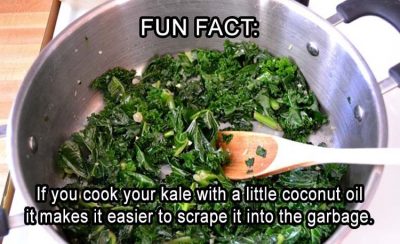
Kale is very high on many peoples’ lists of ‘least favorite vegetables,’ so what’s the point of surviving if you’re going to have to eat kale for the rest of your life? Good news: there are a few ways to avoid the off-putting taste some associate with kale. If you find yourself forced to live off kale, here are four ways to avoid an overwhelming kale flavor:
- Don’t cook it. When cooked, kale reduces in size and volume, concentrating everything about it. Sure, the vitamins and nutrients are concentrated, but that characteristic kale flavor is often concentrated as well. When most people think about hating kale, they’re thinking about hating cooked kale, and I agree. You can’t put enough oil and salt on cooked kale to get rid of that kale flavor, and though I consume cubic feet of kale a year, the thought of cooked kale grosses me out.
- Instead, eat fresh kale as a lettuce substitute. This is how we consume most of our kale. While fresh kale does have the kale taste, it is not nearly as strong as cooked kale. Also, when using fresh/raw kale, the kale taste is quickly and easily subordinated by any other flavor. In a salad, the salad dressing will immediately overpower the taste of kale and make it pass as regular lettuce. We frequently use kale as a base for taco salad and Caesar salad, and it works just as well as any other lettuce (while being more nutritious — more on that later).
- Separate the leaves from the stems. The stems contain even more of the characteristic kale flavor, so tearing the stem and rib off the leaves — especially young, tender leaves — will leave you with a much less odorous green.
- If you’re a fan of smoothies, pineapple effectively blends with and overpowers the taste of kale, so a pineapple and kale smoothie should be palatable to most.
But why go through all this trouble for kale? Why not grow watermelon instead (Answer: Because 9 out of 10 people who try to grow watermelon never get a fully ripe melon, that’s why. I’ve been one of those nine people. TWICE.) Here are three reasons why kale is a top contender for “Ultimate Survival Food”:
If you’re ever forced to grow food to survive, one of your top priorities is picking a plant that will quickly convert dirt, water, and sunlight into an edible product. Planting an apple seed is right out; you don’t have 7 to 10 years to wait for that seed to grow into an apple-producing tree. But other common vegetable garden staples also take a while to complete their journey to your plate. Here are the planting-to-harvest times for some popular vegetables:
- Potatoes: 60-90 days
- Tomatoes: 65-85 days
- Zucchini: 45-55 days
- Corn: 60-100 days
Also, germination to harvest time isn’t the only consideration for how quickly you’ll be able to eat the proceeds of your vegetable patch — there’s also the factor that many vegetables cannot be planted until warmer weather, when there’s no chance of a frost. This decreases the planting window and increases the time it will take from springtime planting to harvest.
What I like about kale, specifically Red Russian kale, is that it’s a frontrunner in both these considerations.
Because the “fruit” of kale is the leaf (vs. other kinds of vegetables where the fruit is produced through flower production, pollination, and ripening), you can technically eat kale as soon as it’s sprouted, as a micro green. This could occur as soon as a week after first planting the seeds. While it would be better to wait until the kale has matured before eating it, the fact that kale produces edible greens in as little as a week makes it a useful tool in crisis or emergency planning.
It doesn’t take kale long to mature fully — baby kale leaves will be available around 25 days, with full size leaves available at 50 days (https://gardenerspath.com/plants/vegetables/grow-red-russian-kale/)
Other salad greens can also complete this quick “planting-to-plate” transit, but kale has a lot more going for it, including:
As mentioned earlier, plants that won’t grow or thrive until it’s a balmy 70 degrees outside won’t make the best survival crops in any areas where cold weather is a concern. However, in New England, kale can be planted outdoors as early as April, despite the fact that frosts and snows often occur through April and into May. Kale can survive temperatures as low as 10 degrees Fahrenheit, and currently my kale plants are thriving in mid-August in a greenhouse that regularly reaches temperatures of 100 degrees Fahrenheit. It isn’t common to find vegetables that can handle both extremes, but kale is one of them.
Kale grows like a weed and will come up year after year. You can chop it to the ground, and in a few days it’ll grow new stalks and start producing new leaves. I never weed my kale — I just plant it so thickly the weeds don’t have any space. Most planting instructions will say to space them out for mature plants, but as long as your soil is well fertilized, forget that — just plant liberally and go for a kale forest.
Here’s the view of my greenhouse kale forest. Note the weeds around the edges and the path struggling to reach daylight. They don’t have a chance:
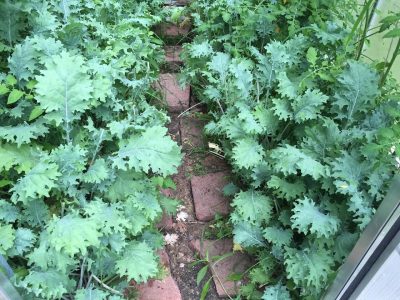
Whether we like kale or not, we all know it’s supposed to be healthy for us. In an emergency/survival situation, access to nutritious food rich in energy, protein, and vitamins will give you the strength needed to do all the other things survival requires. That includes survival challenges that are only mentally rigorous, such as enduring the long periods of isolation and political uncertainty from 2020.
A cup of kale contains 33 calories, and the following nutrients according to livescience.com, including 2 grams of protein per serving!
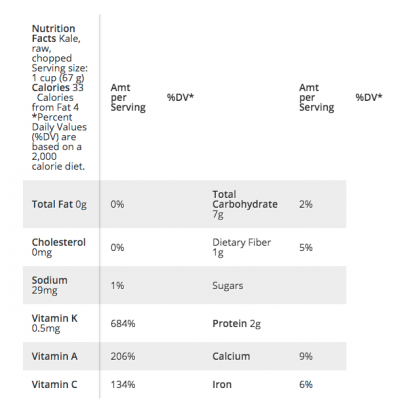
Photo Credit: Livescience.com
One of the things I like about kale is that it’s very versatile as a salad green, while having more substance than iceberg or romaine lettuce, which are basically just cellulose. This means you won’t feel as hungry an hour after eating a kale salad as you would after eating a regular salad.
Much more about the health benefits of kale can be found here.
One of my favorite uses for fresh kale is Venison Steak Kale Cesar Salad. Preparation is easy — grill your venison to taste, combine with fresh de-stemmed kale greens, dress with Cesar, and top with parmesan cheese or any of your other favorite salad toppings.
Because kale can be harvested early in the spring, you can have a nice overlap with your fall or winter meat harvest — the last steaks from a deer shot in December coming together with the first garden greens to produce a meal that’s almost entirely hunter-gathered. There’s a satisfaction that comes with self sufficient sustainability, and the feeling of eating a steak salad made with meat you shot and greens you grew is guaranteed to boost your morale whether you’re surviving, or simply enjoying a regular meal.

